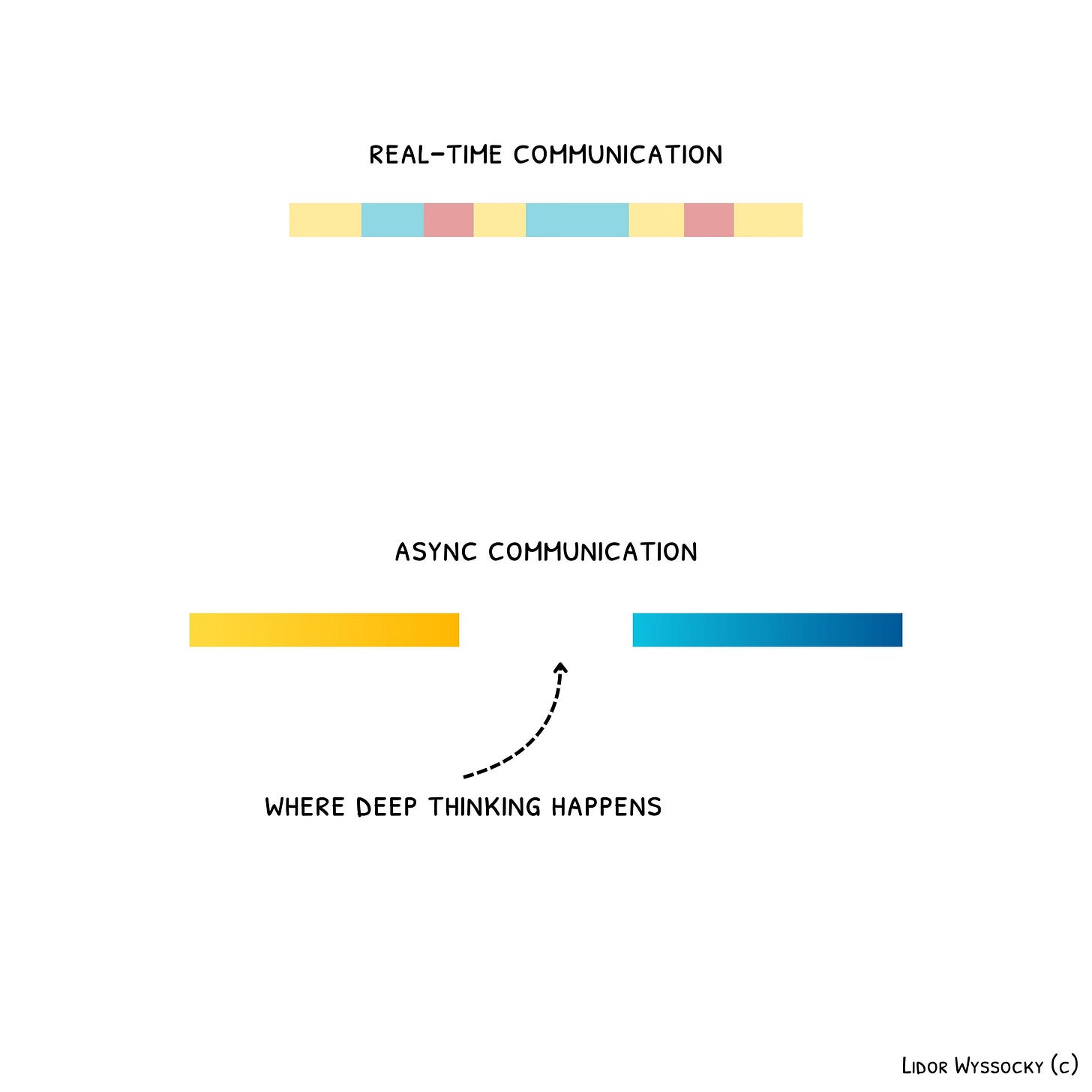Myth Alert: Real-Time is Better Than Async Communication
We learn to talk before we learn to read and write. During our lifetime, we typically talk more than we write. Historically, humans have exchanged information, thoughts, and ideas orally for much longer than through writing.
We are a social species. For most of our lives and history, we communicate to develop new ideas and achieve greater things together, speaking with friends, family, and colleagues. That is why we consider real-time communication — a face-to-face discussion — the most natural and effective way to communicate.
And in some sense, it is. A direct, unmediated, and immediate conversation is compelling. When done right, it has a kind of uplifting energy. You feel this energy pushing you forward and creating momentum. The immediate feedback keeps you on your toes, and the short feedback cycle creates a sense of a collective flow that enables endless ideas and significant breakthroughs. Sometimes, at least. But maybe the most important thing is that oral communication is faster, and our species has lost all sense of patience.
That was not always the case; it still isn’t in some domains. We consider asynchronous communication a recent invention manifested in email and text messages. However, the exchange of letters and manuscripts has played (and is still playing) a significant role in science, philosophy, and other intellectual domains. True, when Charles Darwin exchanged thousands of letters with his colleagues, there were no Zoom calls. When Albert Einstein used letters to develop and refine his theories, there was no practical way to meet colleagues from all over the world on a regular basis. And yet, the slow, asynchronous way of conversing using long-form text is powerful. It creates a space for everyone to think, process information, deeply understand, and react meaningfully.
When you write (not an instant text message, but an actual letter), you have to think, or at least you tend to think. We typically don’t just blurt out whatever is on our mind; even if we do, we see it on the page and have a chance to consider if that is really what we want to say. We have time to arrange our thoughts, reevaluate them, and decide which of them can really promote the conversation. This is almost impossible to do in a real-time conversation.
When you read a written document, you physically can’t jump in with questions, comments, or your own ideas. Well, you can, but you will continue reading before anyone responds. You have the space to understand the details, consider the implications, and immerse yourself in the writer’s perspective. Then, you have all the time to form your opinion or an alternative idea. Your reaction is not spontaneous but thoughtful. When you write it down, you can, once again, consider if it conveys what you meant, and you can revise it before anyone else can read it.
It is a slow process, but deep thinking benefits from this slower pace. It forces you to spend time with the text. It doesn’t expect you to react before you think. You simply cannot do that, even if you want to. Written, asynchronous discussions can yield more meaningful outcomes, provided they don’t devolve into a rapid exchange of messages among too many people.
Exchanging letters seems archaic, but its essence can be easily recreated in workplace communication. When you share a document with your colleagues, you pretty much do what Einstein and Darwin did (minus the personal anecdotes). Feedback or related ideas can also be provided in writing. It seems slower and less effective than just setting up a meeting to discuss the idea, but this slower asynchronous medium adds depth and value.
Of course, reality is not that simple. In a business context, many people can be involved in the conversation, and having a written discussion in any forum broader than one-on-one is often not practical. Combining the two communication modes into one workflow is the best way to enjoy the benefits of both asynchronous communication and real-time discussion.
I can share my ideas in writing and ask for written feedback (one-on-one), process the feedback I receive, and then have a final discussion, if needed, to present the refined outcome to my colleagues. Part of this flow is asynchronous, slower, and, therefore, deeper. The other part utilizes a real-time discussion with more than one person. This second part is more focused and starts from a stronger foundation: most feedback has been addressed, and refinements have already been made. The idea I am presenting is more mature.
Real-Time Communication is irreplaceable. No collaborative goal could be achieved solely by exchanging written material. At the same time, there are considerable benefits to slowing down, allowing things to sink in, and responding thoughtfully. Combining these two modes of communication is the best approach in many cases.
Unleash the power of Generative Communication and turn it into your superpower. I lead Generative Communication and Content-Shaping workshops and talks for teams and organizations.
With 1:1 mentoring, I help individuals communicate better, write better, and turn their ideas into an impact.
Drop me a message…


